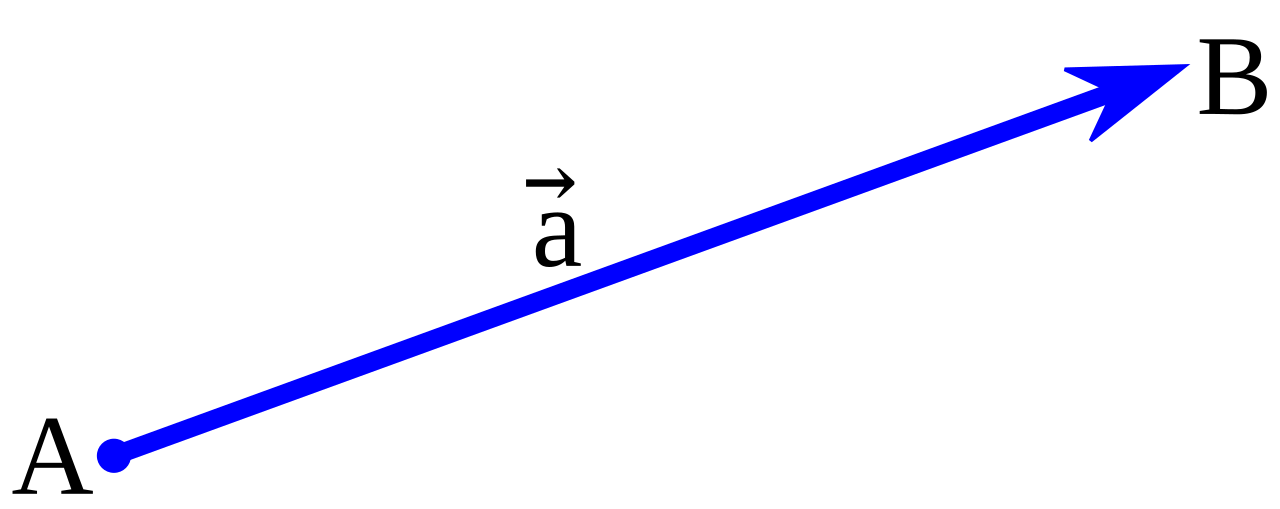Physics is the language with which we describe the universe. It tells the story of how things move, interact, and change. At the heart of this narrative lies a concept that may seem simple but is incredibly powerful: the vector. Whether it’s the force pushing a box, the velocity of a speeding car, or the displacement of a bird in flight, vectors play a crucial role in painting a complete picture of physical reality. But what exactly is a vector? Why does direction matter so much? And how do vectors differ from their scalar counterparts?
In this article, we will journey into the fascinating world of vectors — exploring their definition, properties, and significance in physics. We will uncover why understanding directional quantities is essential for grasping the dynamics of our world, and how vectors help us solve some of the most challenging problems in science and engineering. Prepare to see physics in a whole new light, where magnitude and direction dance together to describe the motions and forces around us.
The Birth of the Concept: Scalars vs. Vectors
Imagine you’re standing on a street, and someone tells you there’s a gust of wind blowing at 10 miles per hour. That number — 10 mph — is useful, but it leaves out a vital piece of information. Where is the wind coming from? If the wind is blowing northward at 10 mph, it means something quite different from a wind blowing eastward at the same speed.
This is where the distinction between scalars and vectors emerges. A scalar quantity is one that has magnitude alone — a number representing how much of something there is, such as temperature, mass, or time. These quantities don’t care about direction. Ten kilograms of weight is just ten kilograms, no matter which way it’s pointing.
Vectors, on the other hand, are entities that carry both magnitude and direction. The speed of the wind is a scalar, but the velocity — speed plus direction — is a vector. When we say the wind is 10 mph north, we are describing a vector quantity.
This dual nature of vectors — magnitude and direction — is essential in physics because many phenomena depend not only on how strong or fast something is but also on where it is headed or how it’s oriented in space.
Defining a Vector: More Than Just Arrows
At its core, a vector is a mathematical object that represents a quantity with both size and direction. In physics, vectors describe physical quantities that require directional information to be fully understood. The magnitude tells you how big or intense the quantity is, while the direction tells you which way it acts.
Visually, vectors are often represented as arrows. The length of the arrow corresponds to the magnitude, and the arrowhead points in the direction. The beauty of this representation is that it captures both aspects simultaneously in a simple, intuitive form.
However, a vector is not just an arrow drawn on paper — it is a geometric and algebraic concept that can be manipulated with precision. Vectors live in the space around us, in two or three dimensions (and even higher in advanced physics), and obey specific rules that allow us to add, subtract, multiply, and transform them in meaningful ways.
Physical Examples: Where Do Vectors Show Up?
Vectors are everywhere in physics and everyday life. Forces, velocities, accelerations, displacements, electric fields, and momenta are just a few examples of vector quantities. Each of these requires both a magnitude and a direction to be completely described.
Consider the force acting on an object. If you push a box with a force of 20 newtons to the east, this force is a vector. The 20 newtons is the magnitude, and east is the direction. Change either one, and you get a different vector with a different physical effect.
Velocity is another key vector. If a car is traveling at 60 miles per hour, that’s a scalar speed. But if it’s moving 60 miles per hour northeast, that’s a velocity vector. It tells you not just how fast the car is moving, but where it’s going — critical information for navigation and physics.
Displacement, which is the shortest distance from one point to another, also requires direction. If you walk 3 meters forward and then 4 meters right, your displacement is not the total distance walked (7 meters scalar), but a vector pointing diagonally from the start to the finish. This vector helps understand the actual change in position.
Components of a Vector: Breaking Down Direction
To work with vectors mathematically, physicists break them down into components along the axes of a coordinate system. Typically, this means resolving a vector into its horizontal (x-axis), vertical (y-axis), and sometimes depth (z-axis) components.
Imagine a wind blowing northeast. Instead of saying “northeast,” you can describe this wind as having a certain component blowing east and another blowing north. For example, if the wind speed is 10 m/s northeast, you can use trigonometry to find the eastward and northward components, each a vector on its own.
These components are numbers with signs that indicate direction along the axis: positive might mean “right” or “up,” negative might mean “left” or “down.” Once decomposed, vectors become much easier to manipulate with algebra and calculus, enabling physicists to analyze complex motions and forces.
Vector Addition and Subtraction: Combining Directions
One of the fascinating aspects of vectors is how they combine. Unlike simple numbers, vectors must be added or subtracted by considering both their magnitudes and directions.
Adding vectors graphically involves placing the tail of one vector at the head of another and drawing a new vector from the start of the first to the end of the second — a method known as the “tip-to-tail” rule. The result is a new vector that represents the combined effect of the original two.
For example, if you walk 3 meters east and then 4 meters north, your overall displacement is not 7 meters but the diagonal vector connecting your start and end points. Using the Pythagorean theorem, the magnitude of this resultant vector is 5 meters northeast.
Subtraction is similar, but it involves reversing the direction of the vector being subtracted and then adding it. This operation is essential in physics to calculate relative velocities, differences in forces, or changes in position.
The Algebra of Vectors: Dot and Cross Products
Vectors are not just geometric objects; they have algebraic operations that help solve physical problems.
The dot product (or scalar product) takes two vectors and produces a scalar. This operation measures how much one vector extends in the direction of another. If two vectors are pointing in the same direction, their dot product is positive and large; if they are perpendicular, the dot product is zero; if they point in opposite directions, it is negative.
In physics, the dot product is useful in calculating work done by a force. Work depends not just on the magnitude of the force and displacement, but on the component of force in the direction of displacement. Using the dot product allows precise calculation of this.
The cross product (or vector product), in contrast, produces a new vector perpendicular to the plane formed by the two original vectors. The magnitude of the cross product corresponds to the area of the parallelogram spanned by the vectors, and its direction follows the right-hand rule — a convention physicists use to determine orientation in three-dimensional space.
Cross products are essential in describing rotational effects such as torque and angular momentum, where the direction of the resulting vector indicates the axis of rotation.
Vectors in Motion: Velocity, Acceleration, and Momentum
Understanding vectors is crucial when describing how objects move and interact. Velocity, acceleration, and momentum are key vector quantities that form the foundation of classical mechanics.
Velocity, as a vector, specifies both the speed and direction of motion. Changing velocity means changing speed, direction, or both. Acceleration, the rate of change of velocity, also includes direction. This is why an object moving in a circle at constant speed is accelerating — because its direction is constantly changing.
Momentum, the product of mass and velocity, describes how difficult it is to stop a moving object. Since velocity is a vector, momentum carries directional information — which is why when two cars collide, the direction and magnitude of their momenta determine the outcome.
Vectors enable physicists to analyze these quantities rigorously, predict motion, and understand interactions in everything from baseball pitches to planetary orbits.
Beyond Classical Physics: Vectors in Electromagnetism and Quantum Mechanics
While vectors are fundamental in classical mechanics, their importance extends deeply into other branches of physics. Electromagnetic fields, for example, are vector fields — meaning at every point in space there is a vector indicating the magnitude and direction of the electric or magnetic field.
This vector nature is essential in understanding how charged particles move under electromagnetic forces. The Lorentz force law, which combines electric and magnetic fields, uses vectors to calculate the force on a charged particle, considering both magnitude and direction.
Quantum mechanics also involves vectors, but in a more abstract sense. States of particles are represented by vectors in complex vector spaces called Hilbert spaces. Though these vectors don’t have a simple geometric direction, the mathematics of vector spaces remains fundamental in describing probabilities and physical observables.
Real-World Applications: Navigating the World With Vectors
Vectors are not confined to textbooks or laboratories; they are part of everyday life and modern technology. Pilots use vectors to navigate planes, combining airspeed and wind direction to maintain course. Engineers analyze forces and stresses in structures using vector methods to ensure safety and stability.
In computer graphics, vectors describe positions, directions, and movements of objects in virtual environments. Robotics relies on vectors to control movement and manipulate objects with precision.
Even in sports, vectors explain how to throw a ball, where to aim a shot, or how forces act on a bicycle. The power of vectors lies in their universal ability to describe directional phenomena, making them indispensable tools across science and technology.
Intuition and Insight: Why Direction Matters
At the heart of the vector concept is a simple but profound insight: direction matters. It’s not enough to know how much — we need to know where. This realization transforms our understanding of motion, forces, and fields from flat, one-dimensional ideas into rich, three-dimensional experiences.
The vector captures the complexity of physical reality in a concise mathematical form. It allows us to combine multiple influences, resolve intricate motions, and uncover hidden symmetries.
Through vectors, physics becomes a story not only of quantities but of orientations, directions, and relationships in space and time.
Conclusion: Vectors as the Language of Direction
Vectors are more than just arrows or numbers. They are the fundamental language that physics uses to communicate direction and magnitude — the twin pillars needed to describe the physical world. From the simplest displacement to the most complex electromagnetic fields, vectors provide clarity and precision.
Understanding vectors equips us to navigate the natural world, solve practical problems, and explore the frontiers of science. They bridge the abstract and the tangible, the mathematical and the physical.
In the grand story of physics, vectors are the words that connect ideas, reveal patterns, and tell the full tale of how things move and interact.






